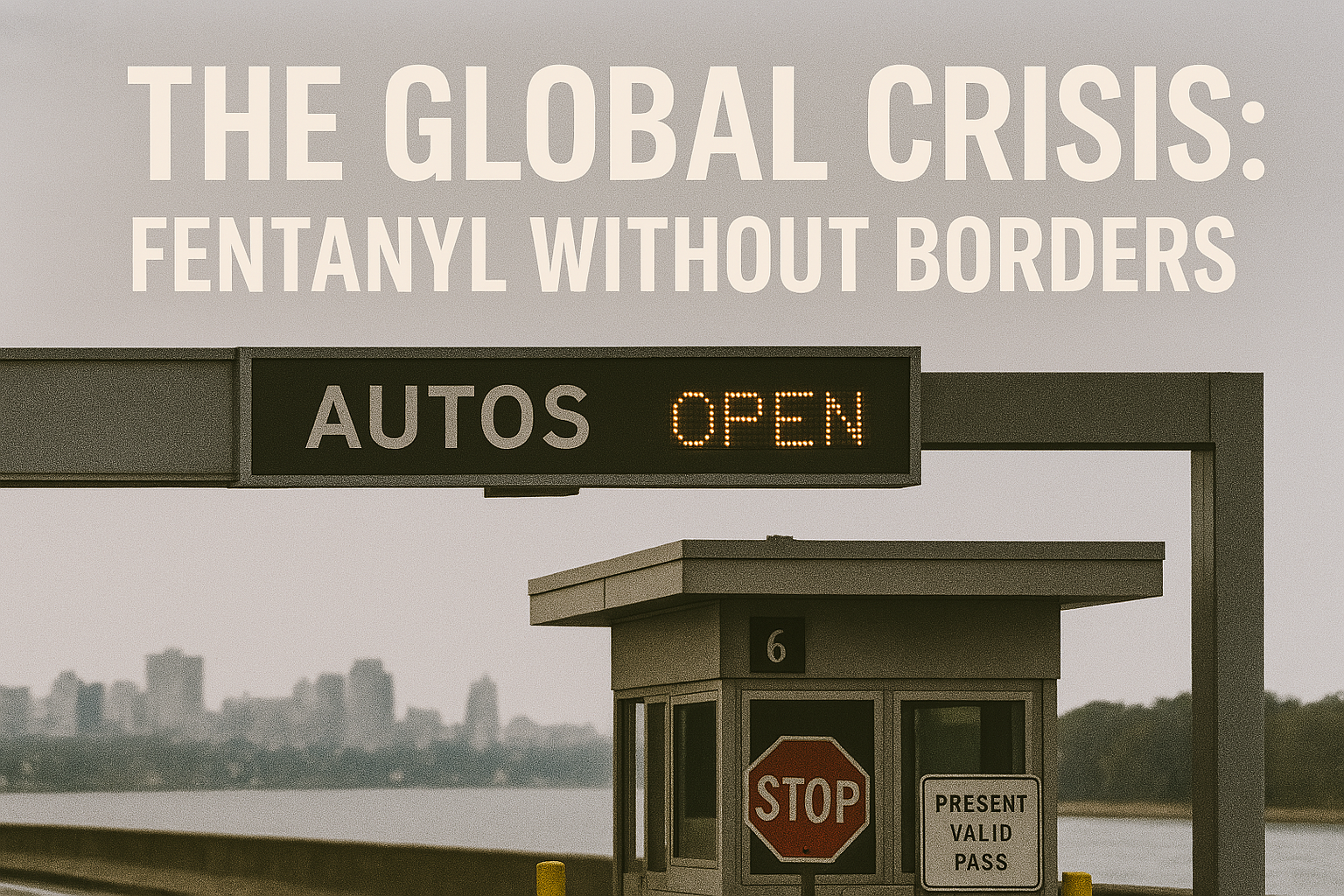Quote: “This isn’t a Canadian crisis. It’s a human crisis with a chemical name.”
Chapter 7: The Global Crisis: Fentanyl Without Borders
Fentanyl doesn’t care about borders. It doesn’t need passports. It moves faster than politics and deadlier than war. What began in North America has now become a planetary crisis—and no country is immune.
United States: The Epicenter
The U.S. remains ground zero. Fueled by aggressive pharmaceutical marketing, lax regulation, and a sprawling healthcare-for-profit system, the U.S. laid the foundation for mass opioid addiction.
As prescription opioids were restricted, heroin filled the gap. Then came fentanyl, cheaper and stronger than anything before. It now accounts for the majority of overdose deaths nationwide. Entire states have declared emergencies. Yet policy remains fragmented, reactive, and politicized.
Canada: A Crisis in Slow Motion
Canada followed the U.S. timeline but with a few years’ delay. Provinces like British Columbia are now overwhelmed. Public health strategies emphasize harm reduction, but critics argue they lack urgency, enforcement, and clear goals.
Despite billions in funding, overdose deaths continue to climb. The public is increasingly divided between compassion and frustration. And still, there’s no national strategy with teeth.
Mexico: The Transit Zone
Mexico is now a major player—not in consumption, but in production. Illicit fentanyl labs, often supplied with precursor chemicals from China, manufacture vast quantities destined for U.S. and Canadian markets.
The cartels have adapted. Fentanyl is compact, potent, and easier to smuggle than heroin or cocaine. This has reshaped drug trafficking economics and intensified violence across Mexico.
China: The Chemical Source
China has been criticized for its role as a supplier of fentanyl precursors and analogs. Though Beijing has taken steps to regulate these substances, enforcement is inconsistent.
Online marketplaces and dark web vendors still funnel massive quantities of precursor chemicals to labs in Mexico and beyond. International pressure continues to mount—but diplomatic complexities remain.
Europe: The Slow Creep
Europe once viewed opioid addiction as a North American problem. But synthetic opioids are now appearing in the U.K., Germany, and Eastern Europe. Countries like Estonia have seen spikes in fentanyl-related deaths. The warning signs are clear, but few are heeding them.
Australia & Asia: Early Containment or Delayed Disaster?
Australia has managed to keep opioid deaths relatively low through strict regulation and public health messaging. But fentanyl is creeping in. Asia, with its massive populations and complex regulatory landscapes, could face a tsunami if early signs are ignored.
A Crisis of Globalization
Fentanyl thrives in a globalized world. It moves through ports, envelopes, encrypted chats. It’s the dark side of supply chain efficiency. And no border fence, customs policy, or arrest can stop it alone.
We Need a Global Strategy
This isn’t a war that can be won country by country. It demands coordination: intelligence sharing, joint enforcement, synchronized regulation of precursors, and a moral shift in how we define recovery.
Until then, fentanyl will continue to flow. From lab to syringe. From continent to coffin.
In Chapter 8, we return home to examine what’s become of those caught in the grip: not just addicts, but the communities built to contain them—and the quiet collapse of hope inside.

